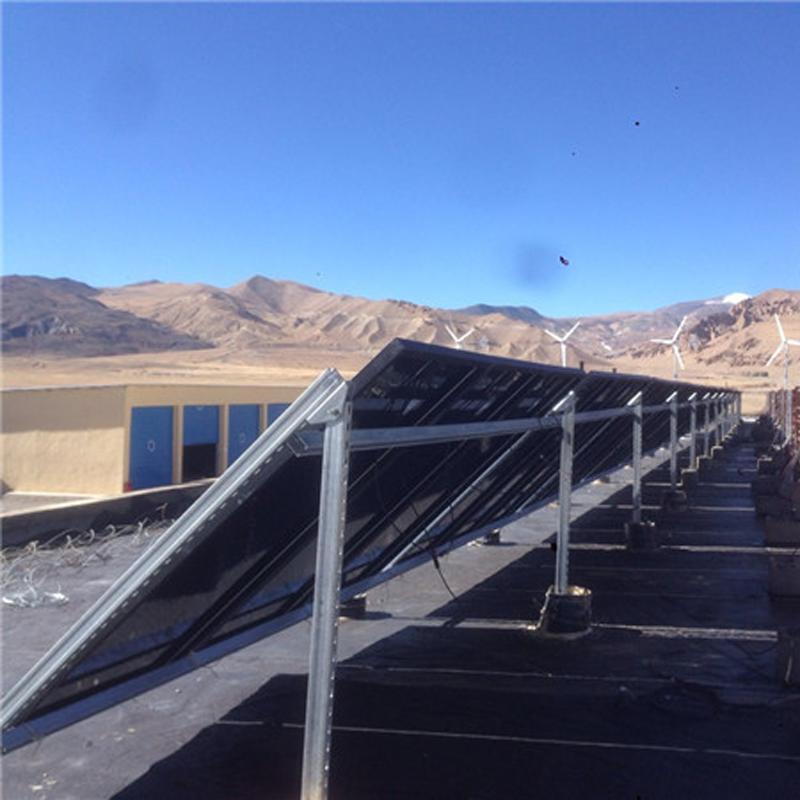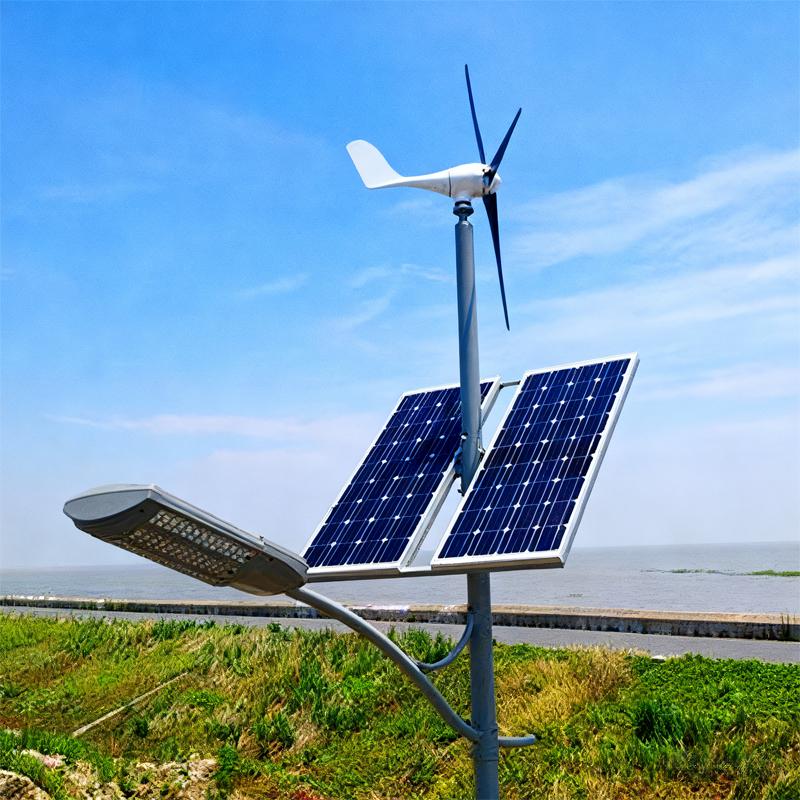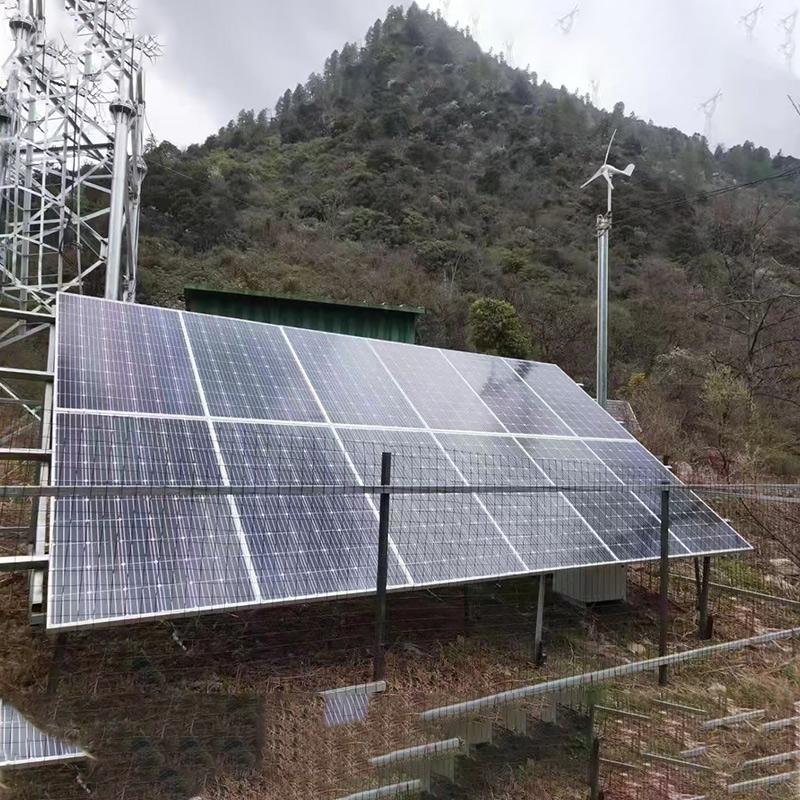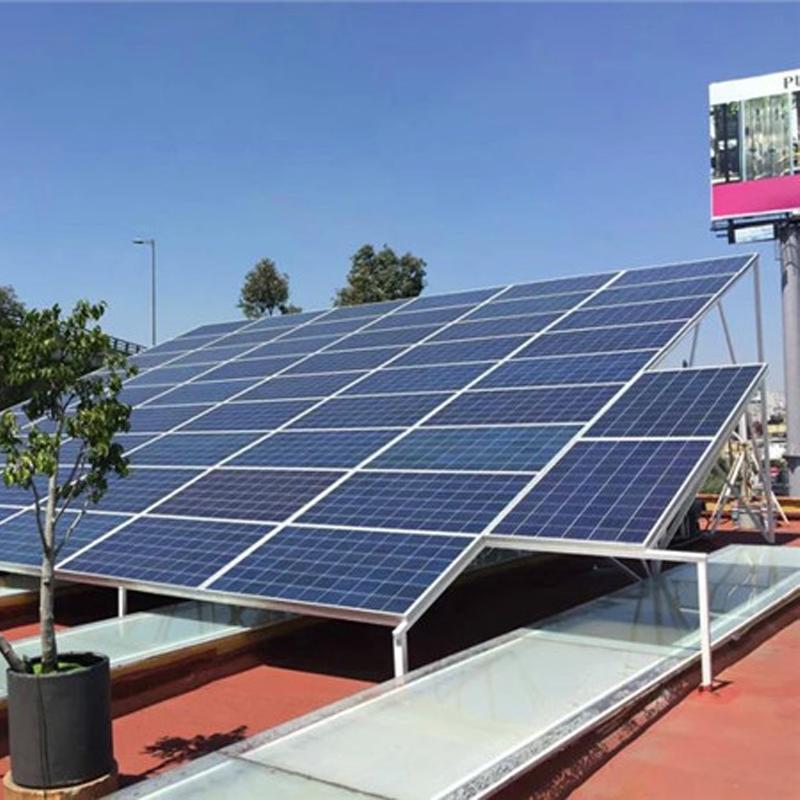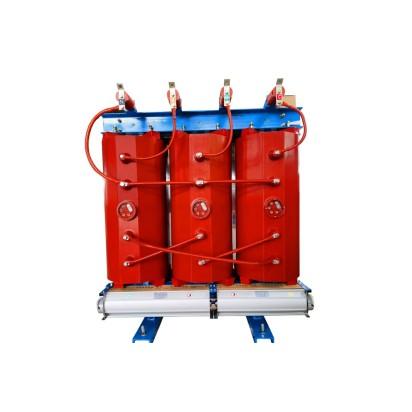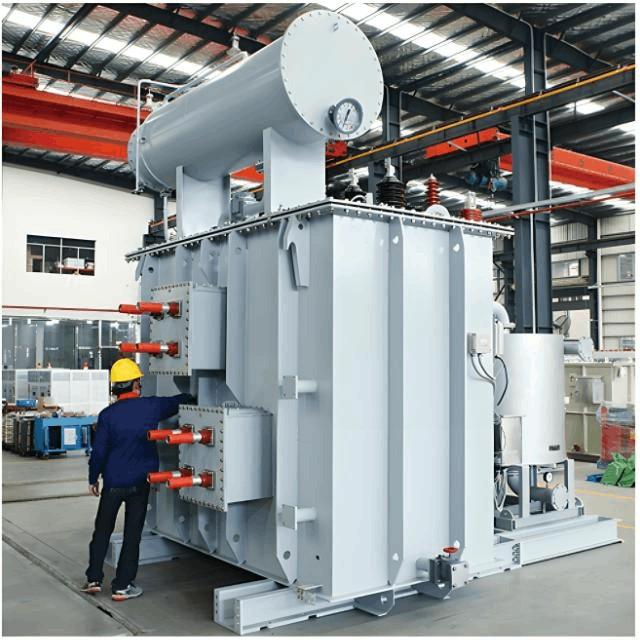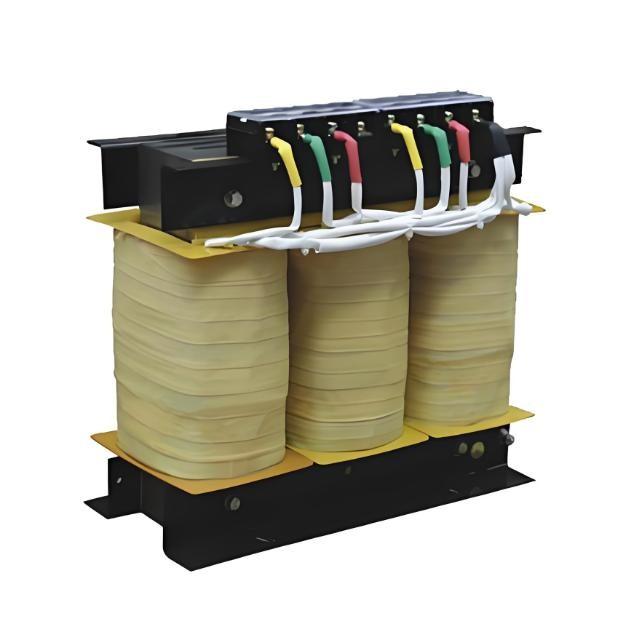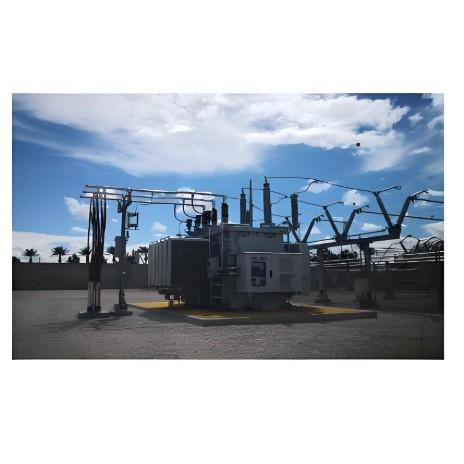Speciale desegnita por scenaroj kiel reto-subteno, komerca kaj industria elektra provizo, kaj mikro-rete konstruo, la integrita vento-sol-lagranĝa sistemo kombinas veturigan funkcion per vento, solajn veturigan funkcion, kaj energiakonservan funkcion. Ĝi fokusas sur "fleksibla dispaŝigo, alta integriĝo, kaj cifera duoblo", proponante avantaĝojn kiel sekureco kaj fidindeco, same kiel alta efikeco kaj energiakonservo. Ĝi ne nur povas kompensi la intermitan naturon de vinda kaj sola energio sed ankaŭ povas provizi stabilan elektran subtenon al la reto kaj uzanto-flanko, kontentigante la bezonojn de energiadministado en diversaj scenaroj.
Kernaj Avantaĝoj: 7 Kardinaj Trajtoj por Solvi Energiadministradajn Problemojn
Fleksibla Energiadispaŝigo: Multfonta Koordinado kaj Postulata Allokigo
La sistemo povas inteligente koordini la energiflujon inter vinda energia produktado, sola energia produktado, lagranĝaj unuoj, kaj publika reto por atingi "postulatan dispaŝigon":
Kiam la vinda kaj sola energioproduktado estas abunda, ĝi prioritatas kontentigi la elektrajn postulojn de la ŝarĝo kaj konservas la superfluan energion en la lagranĝa unuo.
Kiam la vinda kaj sola energioproduktado estas malplena aŭ dum la pika periodo de elektra konsumado, la lagranĝa unuo rapide elĉargas por suplementi energion aŭ aŭtomate tiras energion el la reto.
Subtenas "senreta / rete kunligita" duoblan modon de ŝaltado. En senretaj scenaroj, vento + solo + lagranĝaj unuoj provizas elektron kune. En rete kunligitaj scenaroj, ĝi povas kunlabori kun la reto por regado, adaptiĝante al diversaj energi-postuloj.
Alta Integrita Dizajno: Simpligita Strukturo, Kostreduko, kaj Efikeca Pligrandigo
Ĝi adoptas "PV kaj ESS integritan" arkitектуро, интегрирана сончева инверторна, енергиен мениджмънт и функции за регулиране на енергията в едно устройство. В сравнение с традиционните разпределени системи:
Редуцира повече от 50% от външните компоненти, намалява размера на оборудването (единична система спестява 30% в сравнение с разпределени системи).
Улеснява процеса на инсталация, без да е необходимо отделно дебагване на фотovoltaic, energy storage, and inverter modules, reducing on-site wiring by 60% and shortening the deployment cycle.
Reduces the complexity of later maintenance, making single-point fault detection more convenient and reducing operation and maintenance labor costs.
Digital Twin Control: Real-time Mapping and Precise Prediction
Equipped with an intelligent energy management system (EMS), it builds a "virtual mirror" of the system based on digital twin technology:
Real-time mapping of operational data such as wind speed, light intensity, energy storage capacity, and load power, visually presenting the entire process of "power generation - energy storage - power consumption".
Based on historical data and algorithms, it predicts the energy supply and demand trend for the next 24 hours and adjusts the energy storage charging and discharging strategy in advance (for example, based on meteorological data, it predicts weak sunlight and wind strength the next day and prioritizes energy storage on the current day).
Supports remote cloud control, allowing adjustment of operating parameters through a computer or mobile phone, without the need for on-site monitoring.
Safe and Reliable Operation: Multi-layer Protection, Resilient to Risks
It builds a comprehensive safety guarantee system from equipment to the system, eliminating operational risks:
Electrical safety: The inverter has overvoltage, overcurrent, and short-circuit protection to prevent equipment damage from voltage fluctuations.
Energy storage safety: The energy storage unit adopts fireproof and explosion-proof design, equipped with temperature and humidity monitoring, and automatically cuts off power in case of abnormalities.
Environmental adaptability: Core components are resistant to high and low temperatures (-30°C to 60°C), wind, sand, and rain, suitable for complex climates such as highlands, coastal areas, and deserts.
Grid compatibility: When grid-connected, it complies with grid voltage and frequency standards, avoiding impacts on the grid.
High Efficiency Energy Conversion: Low Loss, High Transmission, and Increased Revenue
The system optimizes energy conversion efficiency at all stages, reducing energy loss:
Both photovoltaic modules and wind turbines use high-efficiency power generation technologies, enhancing the capture rate of wind and solar energy.
The inverter has high conversion efficiency, and combined with energy storage charging and discharging management strategies, it reduces energy loss during storage and release.
The overall system energy utilization rate is ≥85%, and by adopting more advanced MPPT technology, it increases power generation by 15% to 20% compared to traditional wind-solar systems under the same wind and solar resources.
Long-life Energy Storage Assurance: Durable, Low Consumption, and Cost Reduction
The energy storage unit uses long-cycle-life battery cells, offering the following advantages: • The cycle life can reach over 5,000 times, and under normal use, the lifespan exceeds 10 years, reducing mid-term replacement costs.
It supports deep charging and discharging (discharge depth ≥ 80%), with high utilization of energy storage capacity, avoiding the problem of "false capacity marking".
It has self-maintenance functions, automatically balancing cell voltages, delaying capacity attenuation, and maintaining stable energy storage capacity over the long term.
Intelligent operation and maintenance early warning: Proactive detection, reducing downtime
The EMS system has fault early warning and self-diagnosis capabilities, reducing operation and maintenance difficulties:
Real-time monitoring of component status, such as abnormal wind turbines, photovoltaic shading, and battery cell attenuation, and pushing early warning information in advance;
Comes with a fault detection guide, clearly stating the cause of the anomaly and the solution steps, allowing non-professionals to handle it initially;
Supports operation and maintenance data statistics, automatically generating power generation, energy storage, and fault reports, facilitating the optimization of operation and maintenance strategies.
Core Configuration: Multi-component coordination, building a stable energy system
The system achieves smooth operation of the entire chain from "power generation - energy storage - dispatch - output" through the efficient coordination of core components:
Dual-source power generation unit: Wind power generation unit and solar photovoltaic modules work together, taking advantage of the complementary characteristics of wind and solar (solar power during the day and wind power at night or during windy periods), reducing the impact of intermittent single energy sources;
Wind turbine controller: Adapted to wind power generation voltage, converting wind power into stable electricity, and also featuring voltage regulation capabilities to ensure the quality of electricity connected to the system;
PV and ESS integrated equipment: Integrating photovoltaic inversion and energy storage charge and discharge management functions, uniformly regulating photovoltaic and energy storage electricity, simplifying the system structure;
Intelligent Energy Management System (EMS): Acting as the "system brain", it is responsible for digital twin mapping, energy dispatch, safety monitoring, and operation and maintenance early warning, achieving full-process intelligence;
Wide-range compatibility design: Supports a wide input voltage range (200V to 800V), with rated power covering 20kW to 50kW, and energy storage capacity of 50kWh to over 100kWh, adapting to different scale electricity demands.
Core Applications: 8 Scenarios, Empowering Grids and User Sides
Grid peak shaving and valley filling
Responding to grid load fluctuations, during peak electricity consumption periods (such as afternoons in summer and nights in winter), the energy storage unit releases electricity, reducing the pressure on grid power supply; during off-peak periods (such as early morning), it stores excess solar and wind power or low-cost grid electricity, smoothing the grid load curve and assisting in stable grid operation.
Stable power output
Compensating for the intermittency of wind and solar energy, through the energy storage unit's "peak shaving and valley filling", it ensures stable output voltage and frequency (three-phase AC 400V, 50/60Hz), directly supplying power to precision equipment (such as data centers, laboratory instruments), avoiding equipment failures due to voltage fluctuations.
Emergency backup power
When the public grid suddenly experiences a power outage (such as due to natural disasters or line faults), the system can switch to "off-grid mode" within milliseconds, with the energy storage unit quickly releasing electricity, providing continuous power to critical loads (such as hospital ICUs, communication base stations, emergency command centers), avoiding significant losses caused by power outages.
Independent power supply in microgrids
In remote areas without a grid (such as mountain villages, remote mining areas), the system can build an independent microgrid, generating power through the coordination of "wind + solar + storage", meeting the electricity needs of residents and production within the area, without relying on long-distance grid transmission, reducing grid construction costs.
Grid frequency and voltage regulation
As an auxiliary service device for the power grid, the system can quickly respond to fluctuations in grid frequency and voltage (such as frequency deviations caused by sudden increases or decreases in wind power or photovoltaic power), adjust the charging and discharging power of energy storage, and compensate for changes in grid load in real time, helping the grid maintain frequency stability (50/60Hz ± 0.2Hz) and enhance grid resilience.
Energy conservation and cost reduction for industrial and commercial users
In response to the pain point of "large peak-valley electricity price difference" for industrial and commercial users, the system stores low-cost grid electricity or surplus wind and solar power during off-peak hours (such as late at night) and releases stored energy during peak hours (such as during the day for production), replacing high-cost grid electricity and reducing enterprise electricity expenses. In some scenarios, electricity savings of 20% to 30% can be achieved.
Integration of renewable energy
Deployed near large-scale wind and solar power stations, the system stores excess electricity generated by the stations (preventing "abandonment of wind and solar power") and supplies the electricity to the grid when needed, improving the utilization rate of wind and solar energy and contributing to the achievement of the "dual carbon" goals. At the same time, it creates additional revenue for the power stations.
Protection of sensitive loads
For loads with high requirements for power stability (such as semiconductor production lines and precision testing equipment), the system provides "uninterrupted power support". It continuously monitors the quality of the grid and immediately switches to energy storage power supply without interruption if problems such as voltage sags or harmonics occur in the grid, ensuring that the loads do not shut down and reducing production losses.
Precise application scenarios: covering six core areas
Industrial and commercial parks
Supplying power to production workshops, office buildings, and supporting facilities within the park, reducing electricity costs through "peak shaving and valley filling", and serving as an emergency power source to ensure uninterrupted production lines, suitable for industries such as mechanical manufacturing and electronic processing.
Remote mining areas / villages
In remote areas without a grid or with unstable grids, an independent microgrid is constructed to meet the electricity needs of mining equipment (such as small crushers) and village residents, replacing diesel generators and reducing pollution and fuel costs.
Large public buildings
Supplying power to hospitals, data centers, and transportation hubs (airports, high-speed railway stations), providing stable output to ensure the operation of sensitive loads, and serving as an emergency power source during grid outages to prevent medical accidents, data loss, or transportation disruptions.
Supporting facilities for renewable energy power stations
Cooperating with wind and photovoltaic power stations, the system stores excess electricity from the stations, improving the integration rate of renewable energy, and providing stable power for the power stations' auxiliary equipment (such as monitoring and maintenance facilities), reducing the power stations' dependence on the grid.
Auxiliary services for urban power grids
Deployed in urban power grid load centers (such as commercial areas and residential areas), participating in peak shaving, valley filling, and frequency and voltage regulation, alleviating the pressure on power grid supply, especially suitable for areas with dense electricity loads and difficult grid expansion.
Field operation scenarios
Supplying power to field operation sites such as geological exploration, field scientific research, and border guard posts. The system's lightweight design is suitable for field transportation, and it can achieve "wind + solar + storage" autonomous power supply without complex installation, meeting the electricity needs of equipment operation and personnel living.
System configuration
produktnombro |
WPHBT360-50-50K |
WPHBT360-60-60K |
WPHBT480-100-107K |
Vento-Turbo |
Modelo |
FD10-20K |
FD10-30K |
FD14-50K |
Konfiguro |
1S2P |
1S2P |
1S2P |
Nombrita eliga Voltage |
360V |
360V |
480V |
Fotovoltaiko |
Modelo |
SP-600-V |
SP-600-V |
SP-600-V |
Konfiguro |
7S4P |
8S6P |
20S4P |
Nombrita eliga Voltage |
36V |
36V |
36V |
Vento-Turbo inversor |
Modelo |
WWGIT200 |
WWGIT300 |
WWGIT300 |
Nombrita eniga Voltage |
360V |
360V |
480V |
Nombrita eliga Voltage |
400VAC |
400VAC |
400VAC |
Konfiguro |
1S2P |
1S2P |
1S2P |
PV kaj ESS integrita maŝino |
Modelo |
KP-20-50K |
KP-30-60K |
KP-50-107K |
Nombrita kapacito |
51.2kWh |
61.44 kWh |
107 kWh |
Eniga Voltage-rango |
212-288V |
245-345V |
582-806V |
Nombrita Povo |
20kW |
30kW |
50kW |
Nombrita eliga Voltage |
Tri-faza AC400V 50/60Hz |
Tri-faza AC400V 50/60Hz |
Tri-faza AC400V 50/60Hz |
Konfiguro |
1S1P |
1S1P |
1S1P |
EMS |
EnControl |










